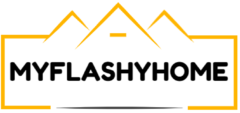
Introduction: Unlocking the Door to Your Future
For many, buying a home represents more than just a financial milestone—it’s a gateway to dreams, stability, and new beginnings. Yet, the process can feel like navigating an unfamiliar maze, with mortgage jargon, credit scores, and fluctuating interest rates creating barriers. You might wonder, “Am I ready?” or “Where do I even begin?”
Rest assured, you’re not alone. This article will take you through the mortgage journey—from the first step to the final signature—so you can approach your homeownership quest with clarity and confidence.
1. Preparing for the Mortgage Process: Laying the Groundwork
Much like setting out on an adventure, preparation is key. Before approaching lenders, you need a clear financial picture to assess what you can afford and what lenders will expect.
Check Your Financial Compass
- Credit Score: Your credit score serves as a snapshot of your financial trustworthiness. Scores above 700 typically qualify for more favorable loan terms.
- Savings: Lenders look for funds to cover the down payment (often 3-20% of the home price) and closing costs.
- Debt-to-Income (DTI) Ratio: Calculate your monthly debt obligations relative to your gross income. Lenders generally prefer a DTI ratio below 43%.
Relatable Example:
Imagine you’re hiking up a mountain trail. If you pack too much (like debt), the climb becomes exhausting. But with balanced preparation (a healthy DTI and savings), the summit is well within reach.
2. Choosing the Right Mortgage: Finding Your Fit
Mortgages come in various forms, each designed for different financial situations and goals. Mortgage Underwriting plays a crucial role in determining the type of loan and conditions you’ll qualify for.
Fixed-Rate Mortgages
- Best for: Buyers who value consistency.
- How it works: The interest rate remains the same throughout the loan term (typically 15, 20, or 30 years), resulting in predictable monthly payments.
Adjustable-Rate Mortgages (ARMs)
- Best for: Buyers planning to sell or refinance before the adjustable period begins.
- How it works: These loans offer a lower initial rate for a set period (e.g., 5 years) before adjusting periodically based on market rates.
Government-Backed Loans (FHA, VA, USDA)
- Best for: First-time buyers, veterans, or those with lower credit scores.
- Perks: Lower down payment requirements and flexible credit criteria.
Pro Tip: Speak with multiple lenders and compare terms. What seems like a minor difference in interest rate could save (or cost) you thousands over the life of the loan.
3. The Underwriting Stage: Passing the Final Gate
The underwriting process can feel like the climax of a suspenseful story. After submitting your application, the underwriter reviews your financial history, employment, credit, and the property’s value to ensure everything checks out.
What Happens During Underwriting?
- Verification: The lender verifies your employment, income, and debt.
- Appraisal: A third-party appraisal confirms the home’s market value aligns with your offer.
- Decision Time: The underwriter may approve, request more documentation, or decline the loan.
Relatable Scenario: Think of the underwriting process like preparing for a big presentation at work. You’ve done the research (financial prep), but the final approval hinges on how well you’ve organized the materials and whether they meet expectations.
4. Closing the Deal: The Final Step
Once your mortgage is approved, it’s time to sign the paperwork and officially become a homeowner. The closing process involves:
- Reviewing the Closing Disclosure: This document outlines final loan terms, monthly payments, and fees. It’s important to review it thoroughly.
- Paying Closing Costs: These typically include loan origination fees, appraisal fees, and escrow deposits.
- Signing the Dotted Line: Once the documents are signed, the keys to your new home are yours.
Pro Tip: Don’t hesitate to ask questions during closing. Transparency ensures you understand every part of the agreement.
5. Post-Close Considerations: Embracing Homeownership
Your mortgage journey doesn’t end at closing. Homeownership brings new responsibilities, such as maintaining the property, budgeting for repairs, and building equity.
- Create a Maintenance Fund: Unexpected repairs (like a leaky roof) can pop up.
- Stay Connected with Your Lender: If financial circumstances change, proactive communication can help you explore refinancing options or deferments.
- Build Equity: By making extra payments or refinancing strategically, you can build equity faster and potentially lower your total loan cost.
Conclusion: The Journey Is Worth It
Securing a mortgage and purchasing a home may feel daunting, but with the right preparation and guidance, the path becomes clear. Think of each step—research, budgeting, selecting a loan, and closing—as milestones on the way to your dream home. Along the way, seek advice, ask questions, and celebrate small wins.
Your dream home isn’t just a destination—it’s a lifelong investment in your future. As you embark on this journey, remember: the right home, backed by the right mortgage, can open doors to a brighter, more secure chapter of your life. Ready to start your adventure? Your dream home awaits.
